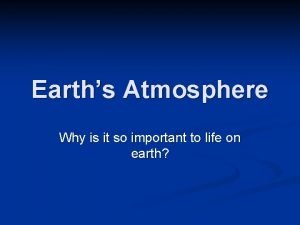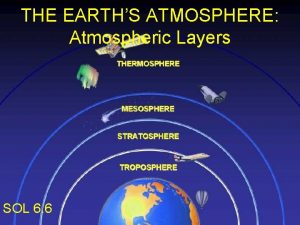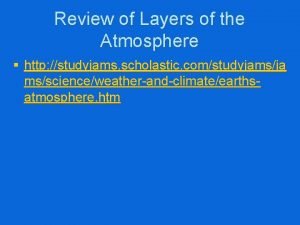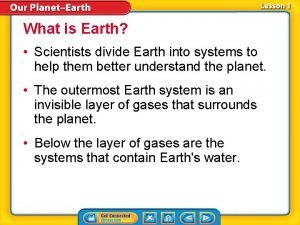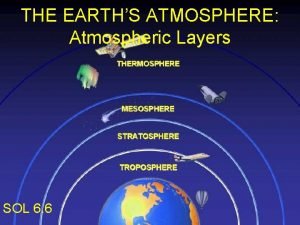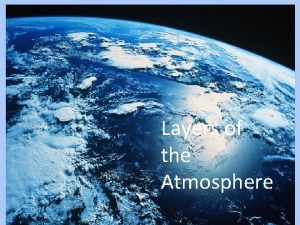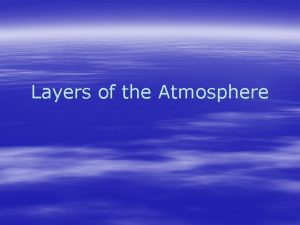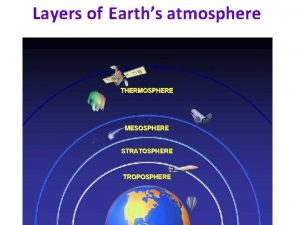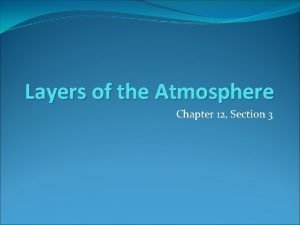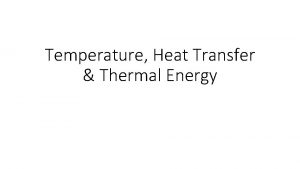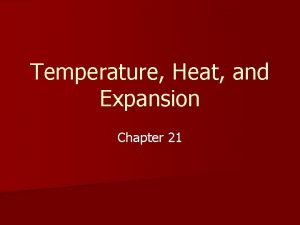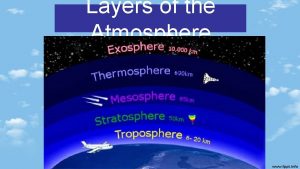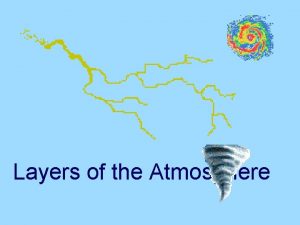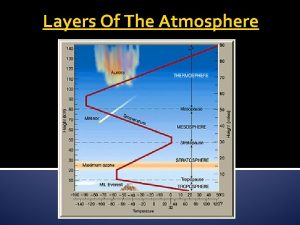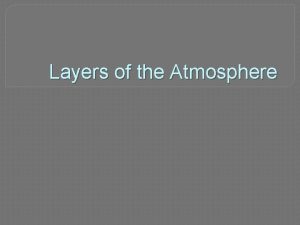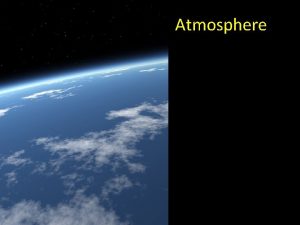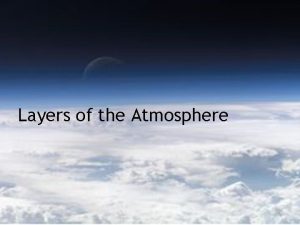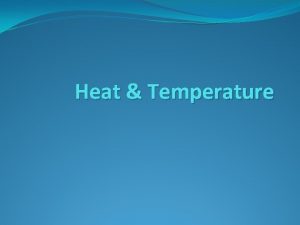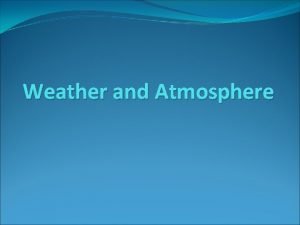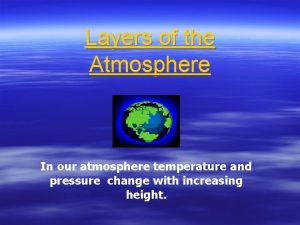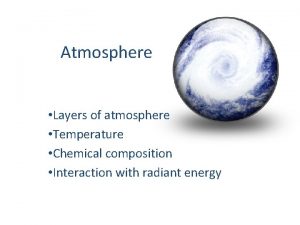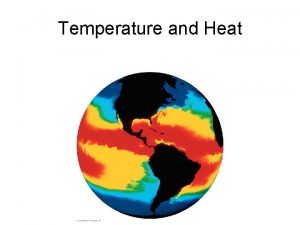Heat Temperature and Layers of the Atmosphere Temperature















- Slides: 15

Heat, Temperature, and Layers of the Atmosphere

Temperature • Air molecules are moving all around us • Temperature = a measure of the average speed of those molecules • There are 3 temperature scales we use, but you only need to know 2 of them for this class • F = (1. 8)*(°C) + 32 • C = (5/9)*(°F – 32) – Measured using a thermometer – Always measured in shady conditions

Temperature Scales You Ought to Already Know • Fahrenheit – Water Freezes at 32°F – Water Boils at 212°F • Centigrade or Celsius – Water Freezes at 0°C – Water Boils at 100°C

Temperature Change w/Altitude Rising Expansion Cooling Sinking Compression Warming Intro to Meteorology

Difference Between Heat and Temperature • Heat = transfer of energy from 1 object to another…the transfer is measured by temperature • Air in an oven at 500°F has high temperature but little heat, but touch anything solid in the oven, and you’ll get burned. • Ever notice that food still gets cold, even on a hot summer day? • Why?

Heating the Atmosphere • The 3 mechanisms of heat transfer are conduction, convection, and radiation • Conduction: transfer of heat through contact • Convection: transfer of heat through circulation • Radiation: transfer of heat through air, or space

Radiation and our Atmosphere • When radiation from the Sun interacts with our atmosphere, there are 4 possible results. Energy either… – passes through – absorbed – scattered – Reflected

Earth’s Energy/Heat Budget Of the 100% of the Sun’s radiation which strikes our atmosphere 30 units reflected or scattered back to space Atmosphere absorbs 19 units A total of 64 units radiated back into space via the atmosphere 6 units radiate to space from Earth’s surface 15 units radiate from surface to atmosphere Evaporation transfers 23 units to atmosphere Earth’s surface absorbs 51 units Conduction and convection transfer 7 units to atmosphere

Reflection, Absorption, and Scattering • Reflection depends on surface albedo – Ice = High Albedo (next slide) • The surface absorbs solar radiation and re-emits it back into our atmosphere as heat. . but … • Greenhouse gases like CO 2 and H 2 O Vapor then absorb this heat and reemit some of it back into the atmosphere…trapping it

Global Albedo

Albedo = % energy reflected • Fresh snow: 75 – 95% • Old snow: 40 – 60% • Desert: 25 – 30% • Deciduous forest, grassland: 15 – 20% • Conifer forest: 5 – 15% • Camera light meters set to 18%

Water Vapor and Heat • Water and water vapor are excellent heat absorbers, absorbers which is why coastal locations are typically cooler than inland regions in the summer…it’s also why it feels warmer on a humid day than a dry one

The Effect of the Ocean on Annual Temperature

Structure of the Atmosphere • The atmosphere is divided into layers based on temperature…. draw this! • Troposphere – Where Weather Happens • Stratosphere – Ozone Layer • Mesosphere – Meso = middle part of the atmosphere • Thermosphere – where Auroras occur

Inversions • Normal = temperatures decrease with height • So, when temperatures increase with height, we say the atmosphere is inverted • Here in SM, our summers are dominated by an inversion
 How many layers are in the atmosphere
How many layers are in the atmosphere Layers of the atmosphere song
Layers of the atmosphere song Studyjams heat
Studyjams heat Scientists divide the atmosphere into how many layers?
Scientists divide the atmosphere into how many layers? Atmosphere
Atmosphere Layers of the atmosphere song
Layers of the atmosphere song What does the mesosphere
What does the mesosphere The first layer of the atmosphere
The first layer of the atmosphere Layers of the atmosphere
Layers of the atmosphere The four main layers of the atmosphere
The four main layers of the atmosphere Difference between curie temperature and neel temperature
Difference between curie temperature and neel temperature Difference between curie temperature and neel temperature
Difference between curie temperature and neel temperature Ferromagnetis
Ferromagnetis Heat vs thermal energy vs temperature
Heat vs thermal energy vs temperature Heat transfer types
Heat transfer types Chapter 21 temperature heat and expansion
Chapter 21 temperature heat and expansion
